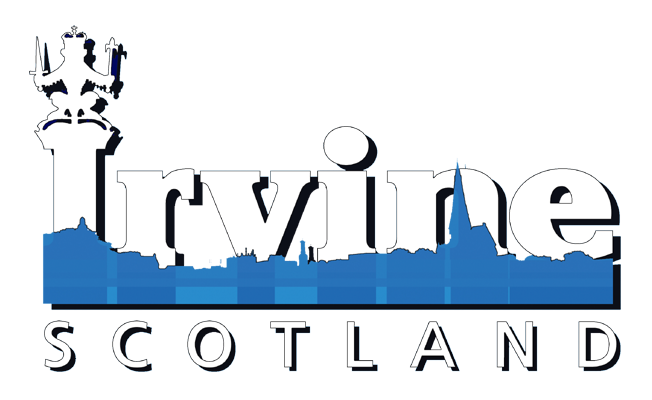Originally known as Smiddy or Smithy Bar, by the middle of the 1700s Glasgow Vennel was part of the main road from Irvine Harbour to Glasgow and an important thoroughfare. Goods were transported by the carters to the city of Glasgow along the Vennel, which was the main route east from Irvine. By taking their loads along the Vennel, carters were able to avoid paying the toll on Irvine Bridge.
The most famous person to walk the Vennel cobbles was Robert Burns, who came to Irvine in 1781 to learn the flax trade.The work was carried out in a small thatched house at the back of No. 10 Glasgow Vennel, which is at the rear of the low stone building seen here on the right. It was in here that Robert worked up to 12 hours a day at the benches, drawing the bundles of rough flax through the heckles as the fibre of the flax plant had to be separated from the stalk and prepared for spinning.
In 1971 the Town Council and Irvine Development Corporation began an “Operation Facelift” to protect the best of the old historic town, and subsequently, derelict buildings were renovated. The joint restoration project involved Cunninghame District Council, Irvine Development Corporation and other partners, including the National Trust and Irvine Burns Club.
In 1974 certain area of Irvine were designated as worthy of conservation, including Hill Street, Seagate and Glasgow Vennel.
The aim of the restoration project was to ensure that the Vennel reflected its past history.
The project was carried out in several phases, with No.10 and the adjoining Heckling Shop coming under Phase 3. The work was carried out by Irvine Development Corporation.
This was achieved by restoring the thatched roof, the rough stone walls and the flagstones. It was supplemented by furniture and artefacts depicting the heckling trade.
The restoration project turned into one of the most celebrated restoration projects in Scotland, receiving a Civic Trust Recommendation and a Europa Nostra Award in 1984. This is a European Union Prize for Cultural Heritage, a very high accoladae indeed.
Heckling is the process of working the fibres of the flax plant into a useable material that can be woven into cloth or rope. The fibres are dragged through large metal combs that separate the individual strands into threads that are then weaved into a twine.
During the early 1980s the Glasgow Vennel underwent conservation; some of the more dilapidated building were completely restored, while others simply needed a coat of paint. The street itself had the tarmac torn away to reveal the original cobblestone roads beneath.
Robert Burns’ family farm grew flax crops but did not utilise the plants for profit, Robert decided to learn the trade of flax working, he moved to Irvine to live with family that stayed in the town, and worked at the Heckling Shop in Glasgow Vennel.
While working in Irvine Burns lodged at Number 4 Glasgow Vennel, which is commemorated by a plaque.
Robert Burns’ family farm grew flax but did not utilise the crop for profit, Robert decided to learn the trade of flax working, he moved to Irvine to live with family that stayed in the town, and worked at the Heckling Shop in Glasgow Vennel.

